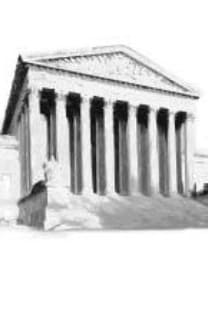The role of animal reason in hume ' s Ethics
David Hume’un ahlakta akılcılık karşıtı eğilimleri kitaplarında hayvan zihnine ve doğasına değindiği bölümlerde de yer almaktadır. Hume’un hayvan zihni ve doğası hakkındaki görüşleri yorumcuları tarafından ayrıntılı bir şekilde yeterince incelenmemiştir. Hume’un hayvan zihni konusundaki gözlemlerinin yetersizliği ve kıyaslarının zayıf olması yorumcuların ilgisizliğinde etkendir. Hume’un ahlak anlayışı hayvan zihni doğrultusunda tartışılacaktır. Böylelikle Hume’un aklın egemenliği ve tabiatçılık konularındaki etkinliği de anlaşılacaktır. Hume hayvanları hem zihni açıklarken hem de ahlak teorisinde kullanmaktadır. Bu çalışmada, Hume’un hayvan zihni ve doğasından yola çıkarak kıyaslamalarla ulaştığı ahlakın akılcı çıkarımlardan kaynaklanmadığı iddiasının ikna edicilikten uzak, zayıf kıyaslarla ortaya konduğu gösterilecektir.
Hume ' un ahlak felsefesinde hayvan zihninin rolü
Hume’s anti-rationalist tendencies towards moral issues can be seen in the parts of his books allotted to animals. However, the problem considering animal reason has not been examined in detail by Hume’s interpreters; I think the deficiencies in both his observations and his poor analogies cause this lack of interest. In this paper I want to argue with Hume’s view of morality in respect to animals for doing so provides great insight into both Hume’s examination of the dominance of reason and his naturalism. Hume uses animals both for stating his theory about reason and for his moral theory. It is assumed in this paper that his assertion to show that morality does not come from relations ― therefore reason ― fails to be persuasive due to the poor design and choice of his analogy.
___
- AQUINAS, Thomas. (2003). On Evil, trans. Richard Regan, ed. Brian Davies. New York:Oxford University Press.
- ARISTOTLE. (1995). Aristotle: Selections, trans. Terence Irwin and Gail Fine Indianapolis: Hackett Publishing Company.
- ARIEW, Roger. (2000). Ed. Rene Descartes Philosophical Essays and Correspondence.Indianapolis/Cambridge: Hackett Publishing Company.
- BAIER, Annette C. (1991). A Progress of Sentiments. Cambridge: Harvard University Press.
- BEAUCHAMP, T. L. (1999). “Hume on the Nonhuman Animal”, Journal of Medicine and Philosophy. 24: 322-335.
- BENTHAM, Jeremy. (1996). An Introduction to the Principles of Morals and Legislation.Oxford: Clarendon Press.
- BUNGE, Mario. (1960). “The place of induction in science” Philosophy of Science, 27:262-270,
- BUNGE, Mario. (1968). “Analogy in Quantum Theory: From Insight to Nonsense”, Philosophy of Science. 18: 265-286.
- CLARK R. L. S. (1985). “Hume Animals and Objectivity of Morals”, The Philosophical Quarterly. 35: 117-133.
- FREEMAN, Kathleen. (1948). Ancilla to the Pre-Socratic Philosophers. http://sacredtexts.com/cla/app/app18.htm reached at 05-06-2009.
- GOMEZ, Juan-Carlos. (2006). “Animal Cognition: Monkey Looks Contradict Hume”, Current Biology, 16: R538-R539.
- GOODALL, Jane. (1991). Through a Window. London: Penguin Books.
- HUME, David. (1985). A Treatise of Human Nature. Edited, with an Analytical Index,by L. A. Selby-Bigge second edition with text revised and variant readings by P. H. Nidditch.Oxford: Clarendon Press.
- HUME, David. (2000). Enquiries Concerning Human Understanding and Concerning the Principles of Morals. Reprinted from the 1777 edition with Introduction and Analytical Index by L. A. Selby-Bigge third edition with text revised and notes by P. H. Nidditch. Oxford: Clarendon Press.
- KANT, Immanuel, and Frederick P. Van De Pitte. (1978). Anthropology from a Pragmatic Point of View, trans. Victor Lyle Dowdell, ed. Hans H. Rudnick Carbondale, IL:Southern Illinois University Press.
- KANT, Immanuel (1952). The Critique of Pure Reason: The Critique of Practical Reason and Other Ethical Treatises: the Critique of Judgment, ed. Robert Maynard Hutchins. Chicago:Encyclopaedia Britannica.
- KEMP SMITH, N. M. (1964). The Philosophy of David Hume. London: MacMillan&Co. Ltd.
- BEKOFF, Marc and MEANEY, Carron A. (1998). Encyclopedia of Animal Rights and Animal Welfare. Westport, Connecticut: Greenwood Press.
- MEILAND, J. W. (1966). “Analogy, Verification and Other Minds” Mind New Series. 75:564-568.
- MOUNCE, H. O. (1999). Hume’s Naturalism. London, New York: Routledge.
- OWENS, Joseph. (1959). A History of Ancient Western Philosophy, New York: Appleton-Century-Crofts.
- RYDER, Richard D. (2005). “All beings that feel pain deserve human rights”, The Guardian. August 6.
- SINGER, Peter. (2007). “All Animals are Equal” in James Rachels and Stuart Rachels(eds) The Right Thing to Do, New York: McGrawHill, 166-177.
- STRATTON, George Malcolm. (1917). Theophrastus and the Greek Physiological Psychology before Aristotle. London: Allen & Unwin.
- TINBERGEN, Niko. (1971). The Herring Gull’s World. New York: Harper&Row, Publishers.
- TRANÖY, K. E. (1959). “Hume on Morals Animals and Men”, The Journal of Philosophy. 56: 94-103 Scandinavian Number.
- WILSON, P.R. (1964). “On the Argument by Analogy”, Philosophy of Science. 31: 34-39.
- WISE, S. M. (2004). “One Step at a Time” in C.R. Sunstein and M.C. Nussbaum ed. Animal Rights: Current Debates and New Directions. Oxford: Oxford University Press
- Yayın Aralığı: Yılda 2 Sayı
- Yayıncı: Bursa Uludağ Üniversitesi
Sayıdaki Diğer Makaleler
Peirce' s pragmatic theory of truth
La Critique du Marxisme Chez Sartre
The ecosophy : Humanistic paradigm of the new millennium
Mekanistik Evren anlayışı ya da hakikatin bilgisinden Fenomenler bilimine
From the Ontological subject to the Ethical '' I ''
Teleolojik etik anlayışın Deontolojik eleştirisi
Albert Camus' ün varoluşçu felsefesi ve Afrika' nın özgürleşmesi
